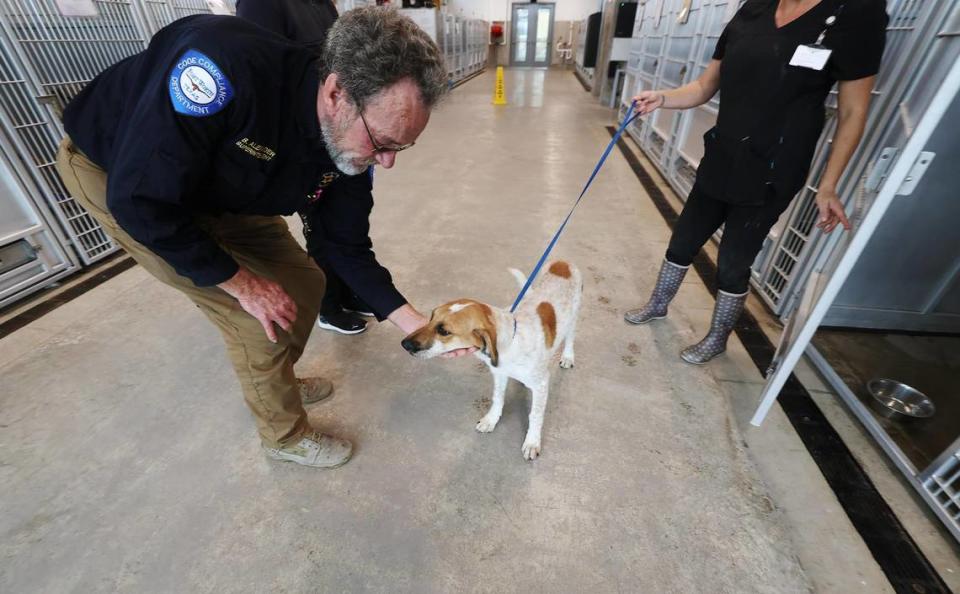At Fort Worth’s city-run animal shelters, hundreds of dogs and cats are killed every month
The number of dogs and cats killed at Fort Worth’s animal shelters have soared this year, and the shelters are now euthanizing hundreds of animals every month.
After the high adoption rates of the early pandemic years, the two city-operated shelters are now overrun with animals. From the beginning of 2023 through the end of September, the shelters have euthanized 2,536 dogs and 685 cats — that’s 10 times the number of animals euthanized during the same period in 2020 and seven times the number in 2021, according to city data.
With nearly 1 in 4 animals dying under shelter care in 2023, the Fort Worth facilities no longer qualify as “no-kill.” And not all of the euthanized animals were sick or dangerous; for more than a year, the city has also been euthanizing adoptable animals because there simply isn’t enough room for them.
Staff at Fort Worth Animal Care & Control point to a high rate of owner surrenders — due to the rising cost of living in the Metroplex, and too few animals being spayed or neutered — as a primary factor in the overcrowding and, as a result, the high rate of euthanasias. Other shelters, including in Dallas, are also facing overcrowding problems.
“We’re over 100 percent (capacity) some days, and we have euthanasia lists daily,” said Chris McAllister, the assistant director of Fort Worth Animal Care & Control. “Unfortunately, the numbers are what they are. It’s what’s coming in the door.”
But the Star-Telegram also spoke with five volunteers or fosters who said they believe the shelters could prevent at least some euthanasias with better management and organization. They point to issues at the Fort Worth shelters — including mislabeling animals as sick or aggressive — that are exacerbating the problem.
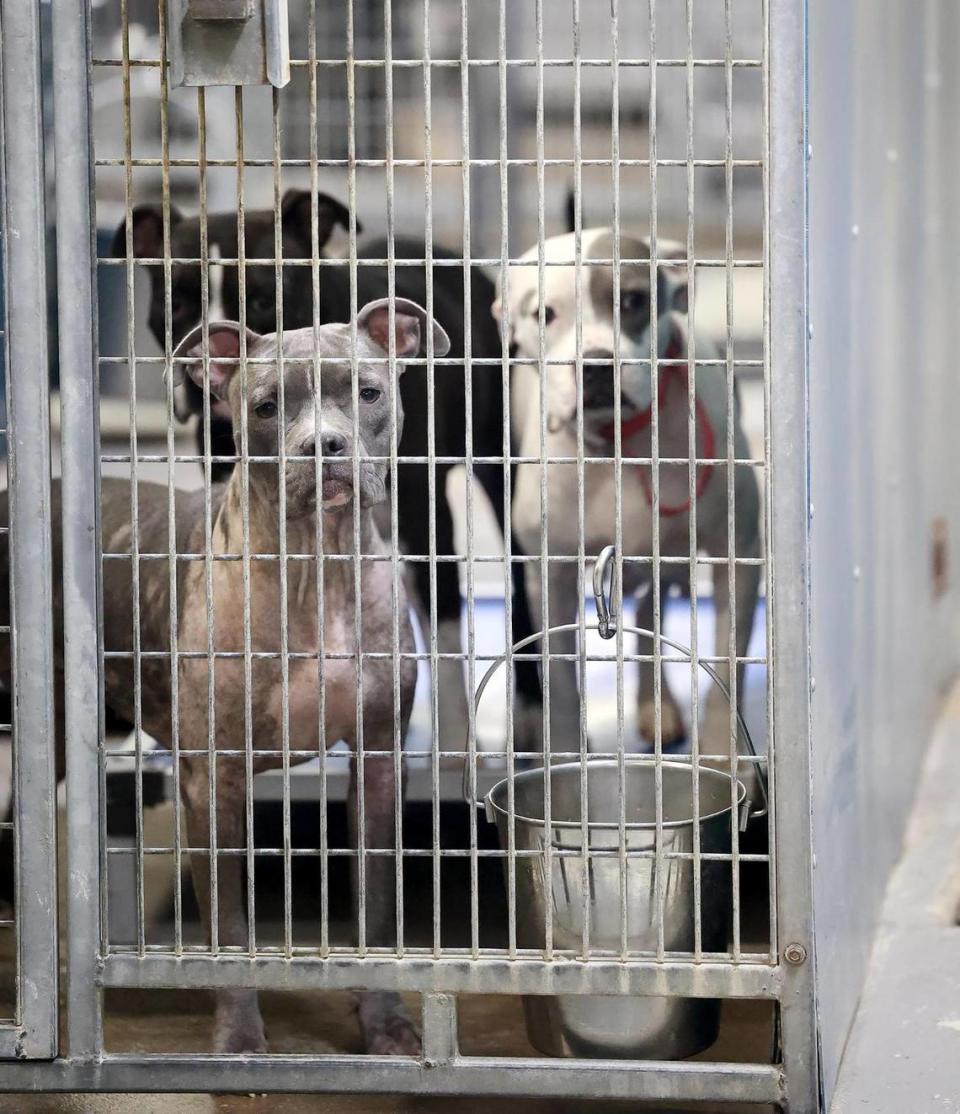
For most of 2019, the Fort Worth shelters had a live release rate over 90%, meaning that 9 in 10 animals were kept alive from one month to the next, according to a Star-Telegram analysis of city data. A 90% live release rate is the standard definition of a “no-kill” shelter.
Throughout 2020 and 2021 — when the pandemic kept more people home and working remotely — the Fort Worth shelters saw more adoptions and had a live release rate above 90%, with many months above 95%.
But by February 2022, that number faltered.
The city’s live release rate has not jumped back into “no-kill” territory in any month since then. Throughout 2023, the city shelters’ live release rate has ranged between 73% and 81%, city data shows.
McAllister said that the city shelters began euthanizing for space reasons in June 2022. It’s difficult to determine the exact number of animals who have been euthanized for space or space-related reasons since then, because the city was incorrectly listing all euthanized animals as “unhealthy/untreatable” — regardless of their actual health or behavioral status — until May of this year.
From May through September, though, the shelters euthanized 537 dogs and 39 cats who were categorized as either healthy or treatable, according to city reports.
An ‘epidemic’ of pet drop-offs
The Chuck & Brenda Silcox Animal Care & Adoption Center, off of Martin Street in southeast Fort Worth, is the city’s original shelter. Inside the building, which has become maze-like after years of additions and renovations, the general population dogs are kept in large rooms lined with aisles of kennels.
In one of the blue-walled kennels, two dogs wag their tails. The pair — a young black dog and his tan-and-black kennel mate — crowd up against the bars while a volunteer feeds them medicine wrapped in chicken and rice.
Several kennels down, a chocolate lab wags his tail and jumps up on the kennel door, trying to push himself through the bars and closer to the people who walk by.
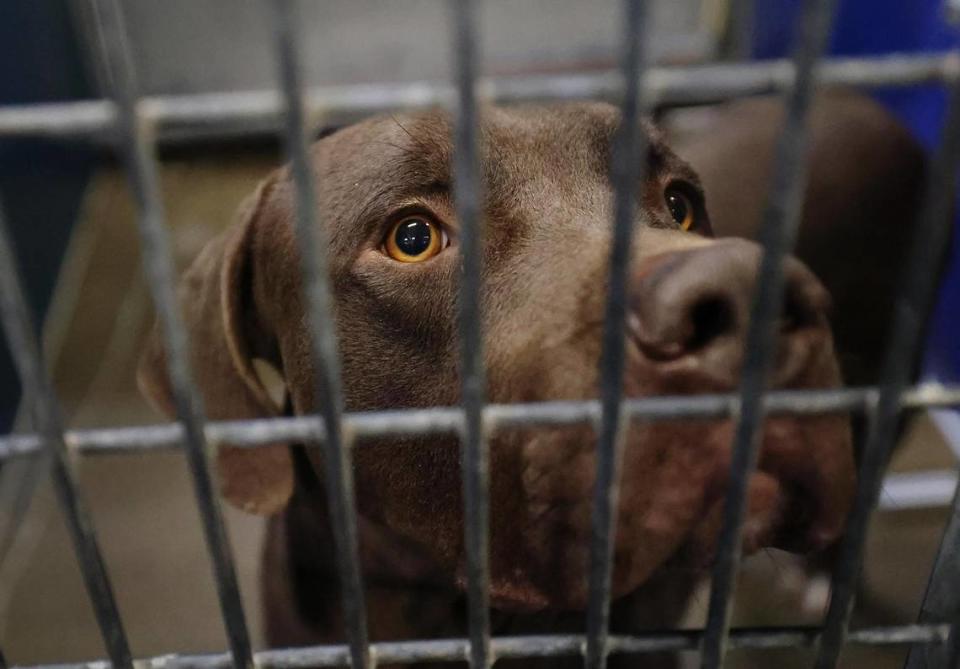
The sound of barking is everywhere, from two brown pit bull-looking dogs sharing a kennel, and from unseen dogs down the aisle, and in the next aisle and in the aisle after that.
Many of the dogs that aren’t doubled up have only a half-kennel, large enough for a low-slung bed a couple inches off the ground, water and little else. If there was room, the divider between the half-kennels could be opened to give each dog a full run. But there isn’t room.
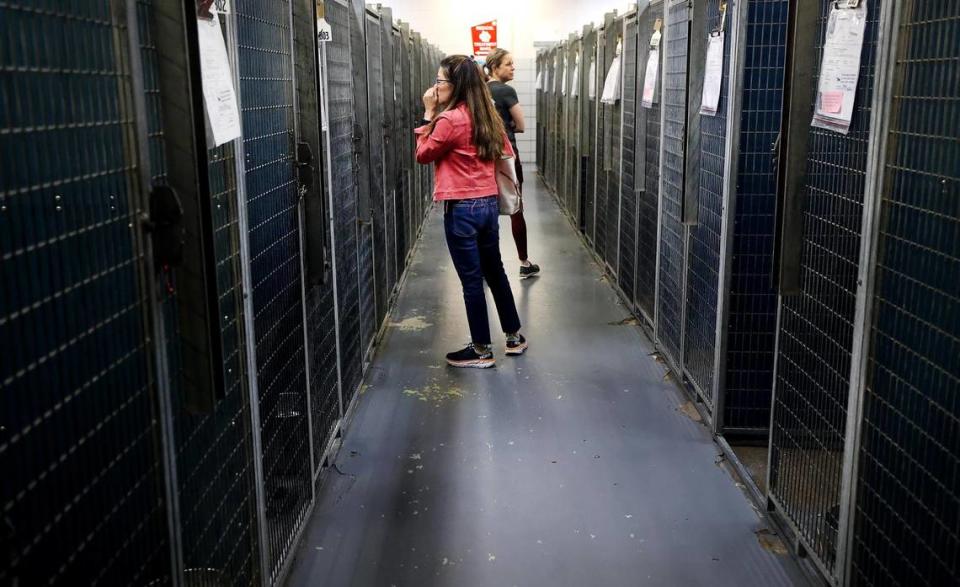
Between the city’s two shelters — the other being the shiny new North Animal Campus on the edge of Haslet — dozens of animals arrive every day, mostly dogs.
Barry Alexander, the superintendent at the north shelter, said that facility had 100 animal intakes in a single day earlier this year. Now, it’s still a couple dozen animals each day — some are strays, but a lot of them are surrendered by owners who can’t or don’t want to keep them anymore.
“There’s been an epidemic of citizen drop-offs in the city of Fort Worth for probably the last couple of years,” Alexander said.
Many of those owners cite rising rent prices and pet deposits, or say they had to move from a house into an apartment, Alexander said. Some had to move in with family and couldn’t take their pet.
When shelter staff press a bit further and offer services to help with the costs of a pet, McAllister said, it becomes apparent that some people just don’t want their animals anymore. Nia Odgers, the program manager of the shelters, said that people seem to feel “less responsibility” or less of a bond with their pet than she’s seen in the past.
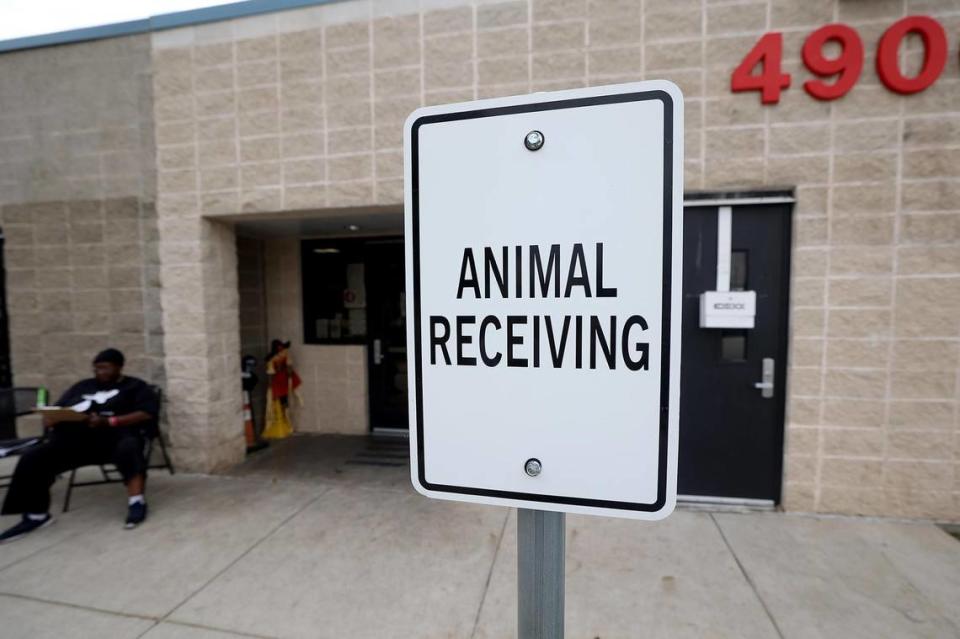
But it’s also undeniable that the Metroplex’s rising cost of living has squeezed many people’s wallets.
Dallas-Fort Worth’s rent costs jumped in 2022 before somewhat plateauing in 2023. RentHub data shows that nearly all Fort Worth ZIP codes have a median rent of at least $1,500, with some reaching above $2,000.
In Dallas, the cost of living has pushed more people to surrender their animals to the shelter, too, according to assistant general manager Sarah Sheek. She said the overcrowding at the Dallas shelter is “brutal” right now; when the Star-Telegram spoke to Sheek in early October, the shelter was at 169% capacity that day.
Like Fort Worth, Dallas Animal Services has had relatively high euthanasia rates this year. In June, the live release rate hit a low of 70%, and the Dallas shelters have euthanized several hundred animals each month throughout this year.
Staff at the Fort Worth shelters tell people when they surrender an animal that there is no guarantee that it will be adopted out. With a shelter so crowded, the animal might eventually be euthanized.
“People don’t understand … every day is a battle,” Alexander said. “Every day is, ‘Will I get 50 intakes or will I get 20?’”
People are still adopting animals from Fort Worth shelters, but not enough to offset the number of new arrivals.
City staff point to the high surrender rates and the overcrowded shelters across the region as the reason for many of the euthanasias, which may not have been necessary if the shelters weren’t so full.
But some volunteers say there’s more going on.
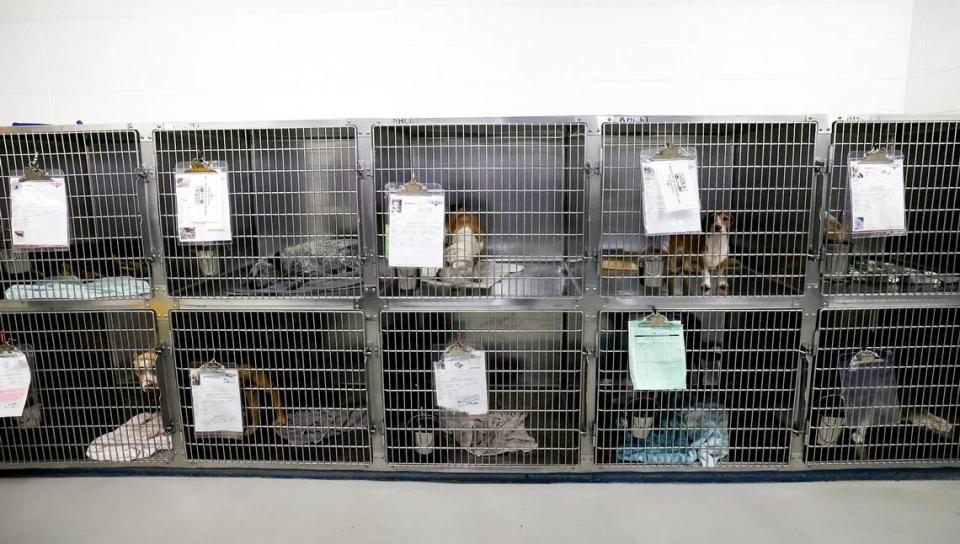
‘They’re not picking the right dogs’
In a video posted on Facebook by a shelter volunteer, two children walk up to a kennel and place the backs of their hands against the grated door. One of the children giggles as the two dogs inside — a mother-daughter pair — wag their tails and lick their hands through the bars.
“They’re so sweet!” says a voice in the video.
Alison Hawkes watched that video this summer, from her home in Maine. When Hawkes saw the video, the younger dog, Macey, had been scheduled for euthanasia due to shelter overcrowding. The older dog — Macey’s mother, a gray brindle named Honey — was in quarantine with a UTI.
The children in the video giggled as the sweet dogs stretched their tongues through the kennel bars, and Hawkes knew she couldn’t let Macey die.
“They were the happiest I’ve ever seen a dog just to see kids,” Hawkes said. “It was watching the videos ... just seeing how sweet they were.”
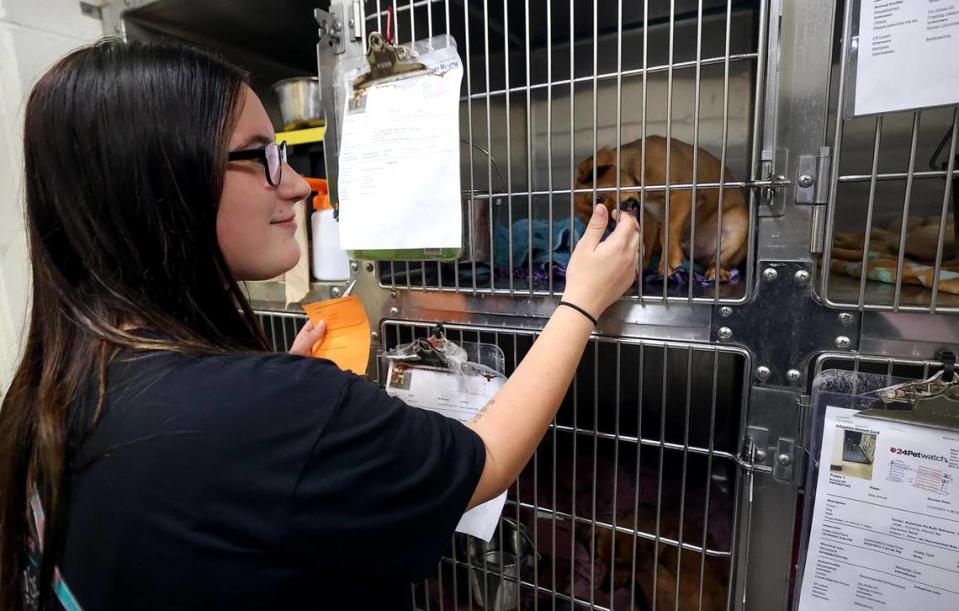
In mid-August, Hawkes flew to the Metroplex, where her brother lives and volunteers with the shelter, to pick up Macey and Honey. A couple months later, with the dogs now safe in her home, Hawkes still gets angry when she thinks about Macey being on the “last-call” list.
“It’s emotional, I think, for all of us to see that these sweet little things could be thought of just, almost like trash,” Hawkes said. “They’re just looking for love.”
Odgers, the shelter’s program manager, said that staff follow a process when they’re selecting animals to be euthanized due to overcrowding. She said they’ll first select animals that have health or behavioral concerns, and then will take into account how long each animal has been at the shelter.
Those are difficult decisions, and volunteers said they wouldn’t want to be in staff’s shoes. But several volunteers also said they don’t believe that shelter staff are actually following the process that Odgers outlines.
For example, Hawkes said Macey has no health or behavioral issues that she knows of. And when Macey was placed on the last-call list, she’d been in the shelter for less than a month, according to a volunteer’s Facebook post announcing her impending euthanasia.
Another volunteer, Sandi Rochowski, said a cattle dog that she had hoped to foster was euthanized before his 96-hour stray hold was up. The dog had injuries, but Rochowski said her understanding was that the injuries weren’t enough to warrant euthanasia.
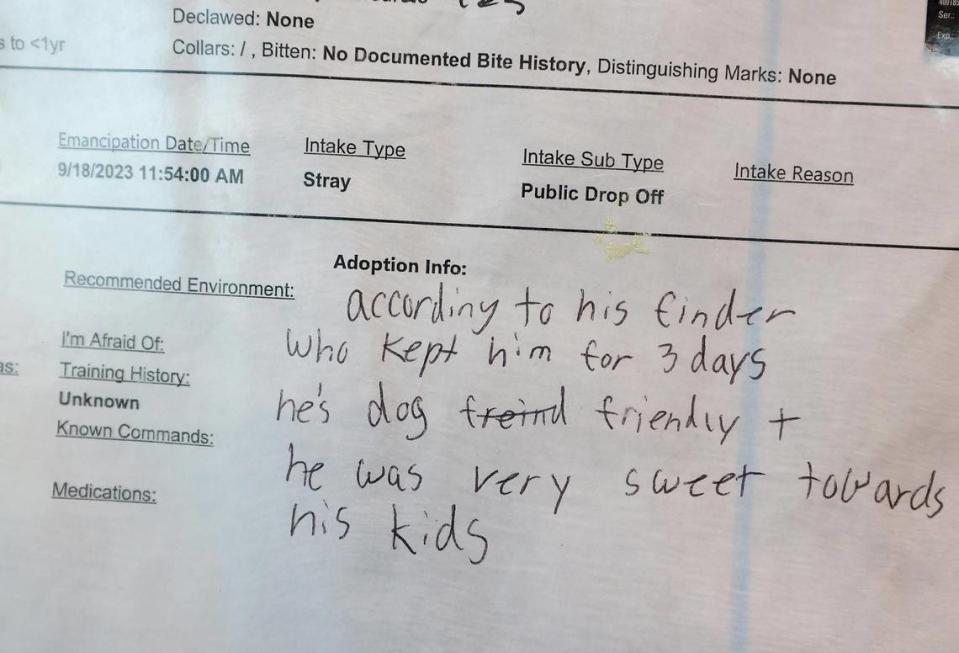
“If it happened once or twice, that’s kind of one thing, but it happens all the time,” she said. “I don’t sleep at night, because I’m constantly thinking about the dogs that didn’t make it out. Dogs that I wanted to help, I knew I could help, but I didn’t get the chance to help because they just took their lives before they were supposed to.”
Devin Wynne, who’s been a foster with the Fort Worth shelters since July, said she’s seen a number of dogs euthanized for minor issues, while dogs with more serious health or behavioral issues are not euthanized.
“Considering the overcrowding, they’re not picking the right dogs to euthanize,” Wynne said. “And that’s happening over and over and over.”
And another avid shelter volunteer — who requested anonymity so as not to interfere with her work there — said she’s seen staff who select animals randomly when they’re deciding on space euthanasias.
“I couldn’t imagine having that job,” she said. “However, I do think that there are processes that could be done better.”
Several volunteers also mentioned general disorganization at the shelter, which they believe harms the animals’ chances of being adopted or placed with a foster.
Wynne said that she went to meet a dog on the last-call list in late September, and was instead introduced to a clearly different dog. It wasn’t until she’d left the shelter that day that staff emailed her to say they’d mixed up the animals and had released the wrong dog from the medical isolation unit. (Wynne provided that email to the Star-Telegram.)
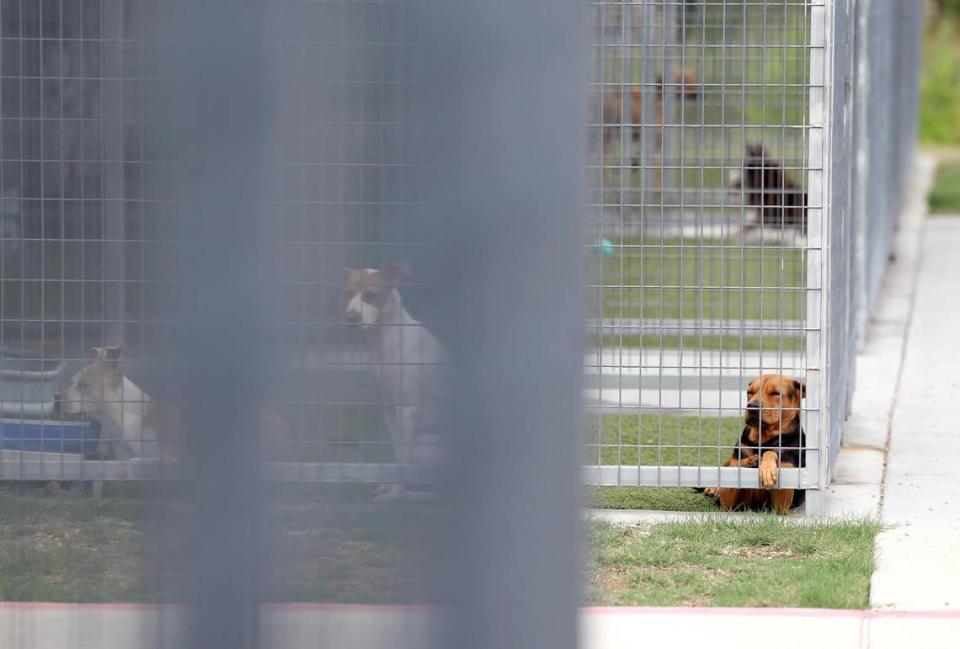
And Hawkes said that, when she adopted Macey and Honey, the dogs were sent home with her brother without cones on, despite having been recently spayed. Hawkes added that no one at the shelter went over her paperwork with her or asked if she had any questions.
Shelter staff, for their part, acknowledge that employees and volunteers may disagree at times, and that they understand emotions are high because they’re dealing with the lives of animals. Staff also said that animals may be labeled as “untreatable” on euthanasia lists because the shelter does not have the capability to treat them, even if they could be treatable in another context, which might exacerbate disagreements.
Shelter managers McAllister and Odgers acknowledge that there’s “always room for improvement,” but said they don’t believe the city’s shelters have major or systemic problems.
‘We’ll get back there again’
Brandon Bennett, Fort Worth’s director of code compliance, said he thinks the shelters will eventually get back to “no-kill” status.
“We’ve been there before,” said Bennett, whose role includes oversight of Animal Care & Control. “We’ll get back there again.”
The volunteers who spoke with the Star-Telegram had ideas for that.
Wynne said the shelters need to codify a process for euthanasia selection. She would also like to see city leaders, up to the mayor and council, address the problem and enforce change.
Disorganization and irrational euthanasias push volunteers and fosters away, Wynne said. Losing that support system “will raise their death rate.”
Several volunteers said the city needs to enforce ordinances restricting backyard breeding and requiring dogs to be spayed and neutered. Otherwise, one said, residents will continue to dump dogs — including puppies — onto the already overburdened shelter.
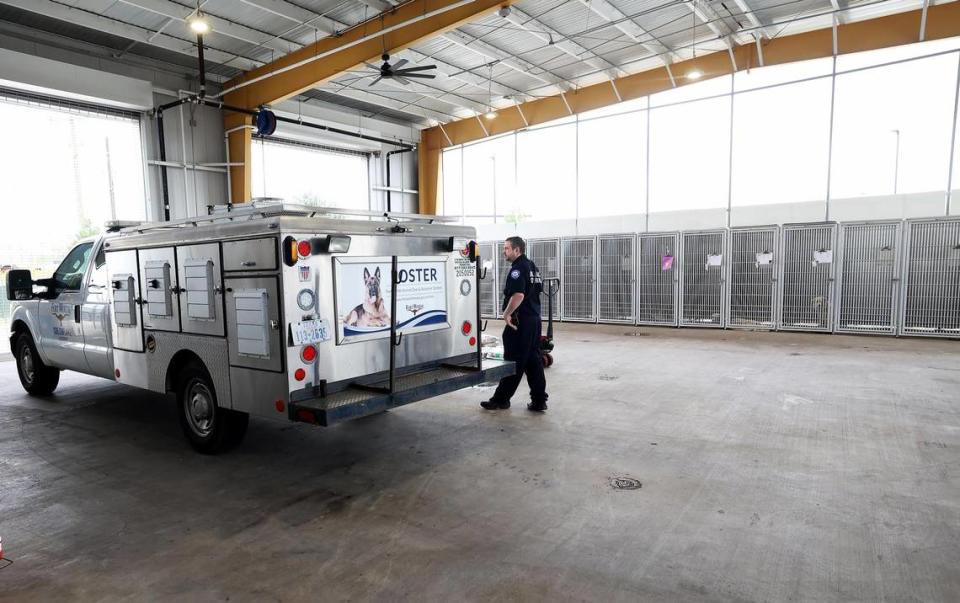
“It’s horrific to see how much the community isn’t held accountable,” one volunteer said. “Fort Worth’s extremely overwhelmed. … It’s like they’re already drowning and people just keep giving them dogs.”
Bennett, the code compliance director, said that adding space or staffing might help a small amount, but would be a temporary and incomplete solution.
“If we had more space, we would just be housing animals for a longer period of time because there’s not somebody coming to adopt those animals,” Bennett said.
What the shelters really need, Bennett said, is fewer intakes and more adoptions, which is why the shelter tries to help people keep their existing pets and also runs regular adoption events.
Bennett encouraged residents to rehome their animals themselves, if they can’t keep their pets anymore, and to look at shelter animals first if they’re in the market for a new pet. But Bennett said that, in order for the situation at the shelters to significantly improve, outside factors also need to shift.
“Part of this is waiting for things in the world to change, to where people are ready to adopt pets,” he said. “What’s going on right now is much greater than what’s happening at our doorstep.”
